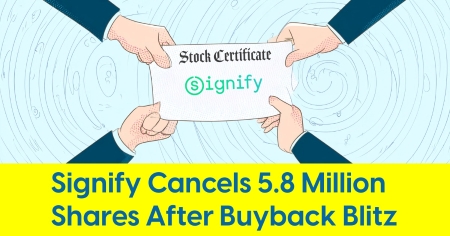April 23, 2025
Trump Signals Tariff Relief, But Uncertainty Still Reigns

President promises "substantial" cuts. Lighting People: "Define Substantial"
After months of tariff escalations and erratic trade policy, the U.S. lighting industry is cautiously watching a potential shift. On Tuesday, President Donald Trump suggested that the 145% tariff on Chinese imports — imposed earlier this month — may be reduced in the near future.
“It’ll come down substantially,” Trump said in the Oval Office. “But it won’t be zero.”
The comments, while lacking in detail, follow earlier remarks from Treasury Secretary Scott Bessent, who privately described the current trade standoff with China as “unsustainable” according to CNN. Though no formal revisions have been made, the tone from Washington has clearly softened.
For lighting people, that matters. Since early February, companies have faced a fast-changing tariff environment — one that has challenged both cost structures and confidence. What began with threats of China-specific tariffs escalated into duties on steel and aluminum, was followed by trade tensions with Mexico & Canada, and ultimately culminated in the 145% tariff on Chinese imports. Each escalation brought new disruptions.
And while the rate itself has only been in place for a few weeks, the uncertainty surrounding it has been simmering for much longer.
Short Pauses, Long Shadows
Compounding the instability were tariff announcements targeting other key manufacturing regions. On April 9, the U.S. established major hikes on imports from a long list of nations including Vietnam (46%), Cambodia (49%), India (26%), and Malaysia (24%). But just days later, the administration paused those increases and reverted back to a flat 10% for a 90-day review period.
A similar episode unfolded in March, when the administration imposed a 25% tariff on Canadian and Mexican imports, a direct blow to lighting brands that assemble products in North America. That measure lasted just 48 hours before it was shelved under pressure from manufacturers and diplomatic partners.
For lighting companies already adapting to inflation, shifting freight costs, and long lead times, the result hasn’t just been higher expenses. It’s been paralysis.
Pricing sheets have been rewritten multiple times. Procurement teams have scrapped forecasts. Distributors are hedging in both directions — some accelerating orders before the next surprise, others freezing purchases altogether.
The Pivot Problem
For years, the industry has known it’s heavily exposed to China. Despite efforts to diversify, Chinese factories remain dominant in producing LED components, drivers, optics, and finished goods. And while Southeast Asia offers some alternatives, the recent tariff scare — even if paused — highlighted the limits of diversification under volatile trade policy.
Mexico has long been considered a safe harbor, particularly for U.S. brands using cross-border maquiladora assembly. But the brief March tariff scare reminded many how quickly that advantage could evaporate.
In short: there’s no silver bullet. And even as companies move to reduce reliance on China, they’re finding that every pivot introduces new risks — cost, capacity, technical compatibility, or regulatory complexity.
Hope, But No Details
President Trump’s April 22 comments suggest that a tariff reduction is possible, but gave no specifics. No rate. No date. No criteria. The current 145% tariff remains in effect, with exemptions only for select consumer electronics.
For an industry accustomed to long planning horizons, that lack of clarity continues to sting.
And even if a lower rate is implemented, it may come too late to salvage Q2 and Q3 sales and profit targets for some companies. Pricing for projects and stock orders has already been revised upward. Fixtures en route are landing at double their original landed cost. Some large-scale developments have paused altogether.
Lighting people aren’t expecting an immediate return to low tariffs. They’re asking for predictability — something to anchor purchasing strategies and forecasting models. Until then, many companies are stuck in a holding pattern, responding to news cycles rather than market signals.









